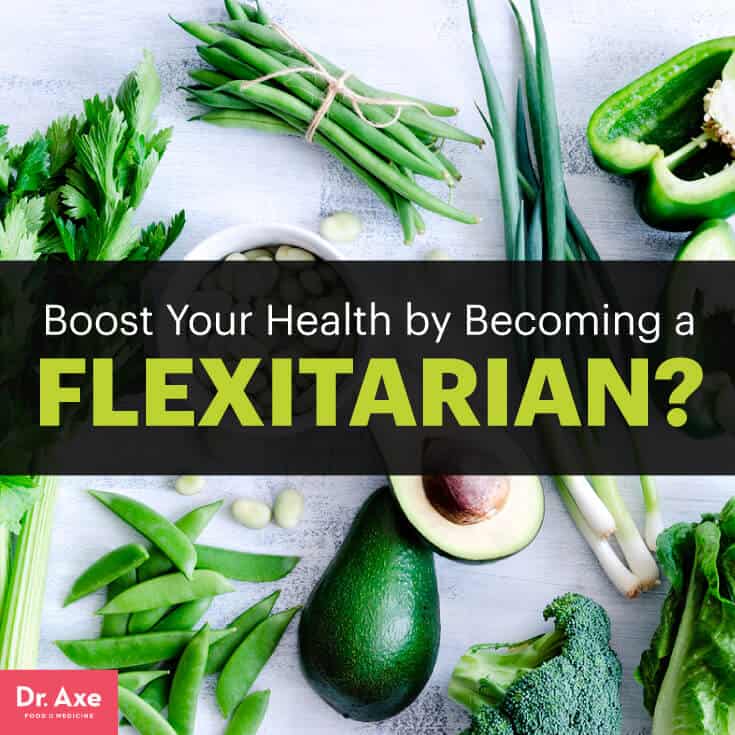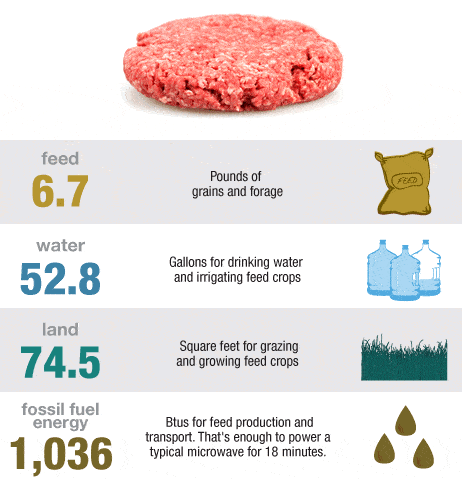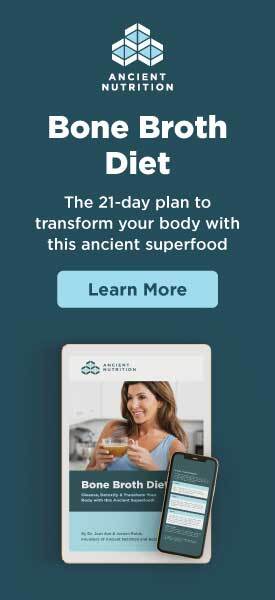This Dr. Axe content is medically reviewed or fact checked to ensure factually accurate information.
With strict editorial sourcing guidelines, we only link to academic research institutions, reputable media sites and, when research is available, medically peer-reviewed studies. Note that the numbers in parentheses (1, 2, etc.) are clickable links to these studies.
The information in our articles is NOT intended to replace a one-on-one relationship with a qualified health care professional and is not intended as medical advice.
This article is based on scientific evidence, written by experts and fact checked by our trained editorial staff. Note that the numbers in parentheses (1, 2, etc.) are clickable links to medically peer-reviewed studies.
Our team includes licensed nutritionists and dietitians, certified health education specialists, as well as certified strength and conditioning specialists, personal trainers and corrective exercise specialists. Our team aims to be not only thorough with its research, but also objective and unbiased.
The information in our articles is NOT intended to replace a one-on-one relationship with a qualified health care professional and is not intended as medical advice.
Beginner’s Guide to the Flexitarian Diet (Less Meat, More Plants)
August 1, 2017

Too often, diets are based on what you can’t eat. Veganism: no animal products at all. Vegetarianism: goodbye, steaks and chicken wings. Gluten-free: see ya later, grains. Paleo: don’t even look at that block of cheese.
So it’s a bit of fresh air when instead of being super-restrictive, a diet adds a little leeway to your life instead. Enter the world of flexitarians.
Often described as vegetarians with benefits, flexitarians are people whose diet is mostly vegetarian but sometimes includes meat, fish or poultry. (1) And while stickler vegetarians and vegans sometimes consider flexitarianism a form of “cheating,” the diet just might be one of the best ways to reduce environmental impact and improve health.
What Is a Flexitarian?
Flexitarians are just that – flexible. Instead of committing to a full-time, plant-based diet, flexitarians focus on eating mainly whole foods like fruits, vegetables, grains and dairy.
The amount of meat that flexitarians consume varies: Some might spend six days eating meat-free and then enjoy a Sunday roast, while others might eat a small amount of meat a few days a week.
While it might seem foreign to some people who grew up on a meat and potatoes diet to start treating meat more like a garnish, consider that Americans are eating a whole lot more meat than we used to. In the 1950s, for example, the average American consumed 138.2 pounds of meat a year. That number soared to more than 195 pounds in 2000. (2).
For people who can’t seem to commit to cutting out burgers or fish entirely but want to improve their health or reduce the environmental impact of eating meat and fish, flexitarianism offers a compromise. It also fits in nicely with what healthy eating advocates like Michael Pollan offer as a guideline to eating well: “Eat food. Not too much. Mostly plants.”
But is becoming a flexitarian the right option for you? Let’s take a look.
Related: TB12 Method: How to Follow the Tom Brady Diet Plan
Benefits
1. You can make it work for your family
One of the greatest benefits of flexitarianism is that there are no hard and fast rules. It is largely a shift in mindset, from thinking that meals require meat to be “complete” to one where meat might be added occasionally. Instead of focusing on not eating meat, flexitarianism emphasizes more veggies and fruits.
A focus on reducing meat and fish intake means that families spend less overall on their grocery budgets and inferior quality meats. We know the dangers of cheap, factory-farmed meats: grain-fed meats packed with antibiotics and resistant strains of bacteria and viruses. Farmed fish isn’t any better: they can cause inflammation in humans and have high levels of cancer-causing chemicals.
Now, the average family cannot afford to purchase quality grass-fed beef or wild-caught salmon for seven meals a week. But it does become a lot more budget-friendly and feasible to buy healthy meats at your local farmers’ market or from the butcher when you’re shopping for just one or two meals or featuring meat as a side dish instead of the main.

2. You’ll reap the benefits of animal products
Following a flexitarian diet means you’ll enjoy the healthy benefits of a plant-based diet without skimping on the nutritional benefits that animal products offer.
Five of my eight favorite natural protein foods come from animals: grass-fed beef, organic chicken, free-range eggs, wild salmon and raw dairy. A vegetarian or vegan diet doesn’t make it impossible to consume enough protein, but it sure becomes a lot more difficult.
By allowing small amounts of nutritious, quality animal products into your diet, you can ensure you’re getting enough protein. And because protein improves muscle mass, stabilizes blood sugar, keeps bones strong and slows aging, you definitely want enough!
Being flexitarian also means you can reap the benefits that come from eating wild-caught fish. They are the best source for omega-3 fatty acids. These fatty acids are powerhouses that do everything from protecting your heart to preventing cancer and improving brain health.
3. You’ll improve your health
A diet that’s heavy on whole foods and limits meat – while eliminating refined and processed foods – has a wide range of health benefits. One article published in The Permanent Journal by a team of physicians advocates flexitarian-style diets as a way of improving health outcomes amidst the rising cost of American healthcare. (3)
“Research shows,” they say, “that plant-based diets are cost-effective, low-risk interventions that may lower body mass index, blood pressure, HbA1C [blood glucose levels] and cholesterol levels.”
They go on to suggest that the amount of medications patients need to treat chronic disease can be reduced and that flexitarianism is an especially good option for those suffering from high blood pressure, diabetes, cardiovascular disease or obesity. One of my favorite lines from this article is when the doctors note that a flexitarian diet needs to be personalized for each person: “A plant-based diet is not an all-or-nothing program, but a way of life that is tailored to each individual.”
And if you’re looking to lose weight, switching to a flexitarian diet might help you shed pounds, too. One study found that out of meat eaters, vegetarians, semivegetarians (flexitarians) and vegan women, those who ate meat were much likelier to be overweight – in fact, 40 percent were. (4)
According to the study, “even if vegetarians consume some animal products, our results suggest that self-identified semivegetarian … women have a lower risk of overweight and obesity than do omnivorous women. The advice to consume plant foods and eat less animal products may help individuals control their weight.”
4. You’ll reduce your environmental impact
It can’t be overstated: eating less meat does affect the environment. When compared to plants, livestock requires a lot more food, water, land and energy to grow and later transport.
Take, for instance, this example by NPR of what it takes to make a quarter-pound hamburger: 6.7 pounds of grain and forage, 52.8 gallons of water for drinking and irrigating feed crops, 74.5 square feet for grazing and growing feed crops and 1,036 BTUs of fossil fuel energy for feed production, enough to power the average microwave for 18 minutes. And that’s just one small burger. (5)

Source: J.L. Capper, Journal of Animal Science, December, 2011.
Credit: Producers: Eliza Barclay, Jessica Stoller-Conrad; Designer: Kevin Uhrmacher/NPR
In fact, the food system is responsible for more than a quarter of all greenhouse gas emissions – up to 80 percent are associated with livestock production. (6) But recent research led by scientists at the Oxford Martin School found that globally adopting diets that consist of at least five portions of fruits and vegetables and half a portion of red meat a day, would cut food-related emissions by 29 percent. (7)
Additionally, moving to these guidelines could also avoid 5.1 million deaths per year by 2050. About half of the avoided deaths were because of reduced red meat consumption and a reduction in calories, with fewer people becoming overweight or obese.
While a change of this nature would be a massive global undertaking, just reducing our own meat intake – and having the ability to buy local, reducing transport costs – would benefit the environment.
Diet Plan
If adopting a flexitarian diet sounds like the right choice for you and your family, it’s simple to get started.
1. Eat more plant-based foods
Sounds obvious, right? But only one in 10 Americans eats enough fruits and veggies a day. (8) To make sure you’re getting all the nutrients that these foods provide, try incorporating vegetable juices like this Green Detox Machine into your mornings. They’re a great way to sneak in an extra serving or two of vegetables with minimal effort. Homemade smoothies can also mix in fruits and vegetables.
You can also pair meals with a simple side salad that includes sweet fruits like mangos with leafy greens. Finely diced veggies are also wonderful when added to sauces. And when you need a mid-afternoon snack, reach for a piece of fruit with your favorite nut butter or sliced veggies and hummus.
2. Eat less meat
Turn meat into a condiment for your meals, or limit to just that Sunday meal. Make a pound of grass-fed beef last for 10 servings rather than four or cook in a giant pot where you make sure the vegetables more than quadruple the amount of meat, for example.
3. Quality counts
Be sure that the meat that do eat is of the best quality: free-range chicken, grass-fed beef, wild-caught fish, etc. And stay away from the processed meats like salami, sausage and, yes, bacon. When purchasing animal products like meats or dairy, buy the highest quality your wallet allows. Your body will appreciate smaller servings of animal products a lot more than large amounts of inferior meats and dairy.
Meanwhile, a diet consisting of pasta, French fries and potato chips will definitely reduce your meat intake – and will also leave you feeling terrible.
In fact, there’s been an increase in the amount of so-called ultra-processed foods, which stunningly make up 60 percent of the average American’s diet now. They include frozen dinners (yes, that includes pizza), all sodas (even diet!), store-bought cakes and cookies, and much more. Choose plant foods that are as close to their natural state as possible.
4. Get the right nutrients
If you’re cutting way back on animal products, there are a few nutrients to ensure you get enough of:
Vitamin B12: Animal foods are the best sources of this vitamin, which maintains energy levels, keeps your heart ticking healthily and can boost mood. If you’re suffering from a vitamin B12 deficiency, I recommend taking a whole foods-based B-complex supplement or a high-quality whole foods-based multivitamin.
Iron: As a nutrient that helps transport oxygen throughout the blood, getting enough iron is critical, particularly for women, as females lose iron during their monthly menstrual cycle. Healthy iron levels also prevent anemia, keep brain functions working smoothly and support the body’s development and growth.
Foods like meat and fish is more absorbable than those found in plant sources. Spinach and beans have a high amount of iron and, when paired with a food that’s naturally high in vitamin C, will be absorbed better.
Final Thoughts
If you’re looking for a diet that will improve your health, fit into your family’s budget and make a difference for the environment, going flexitarian just might be the answer.













